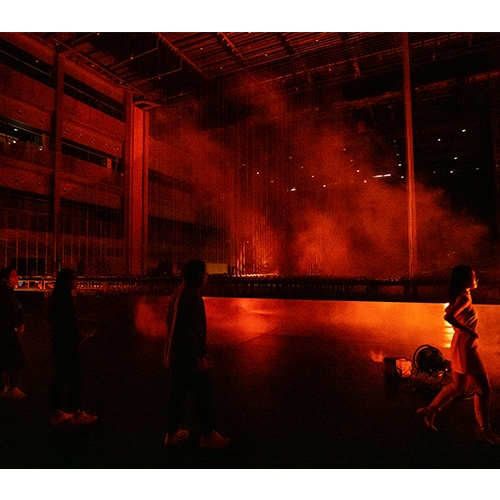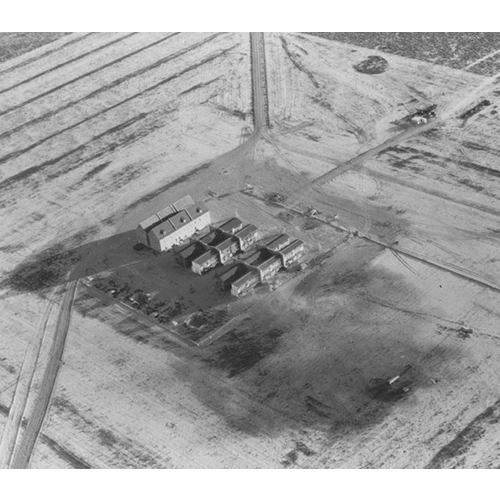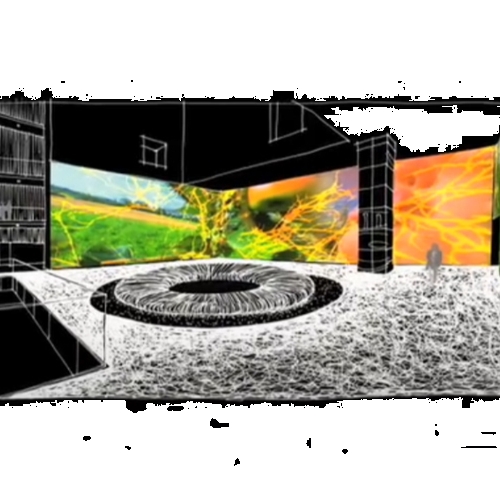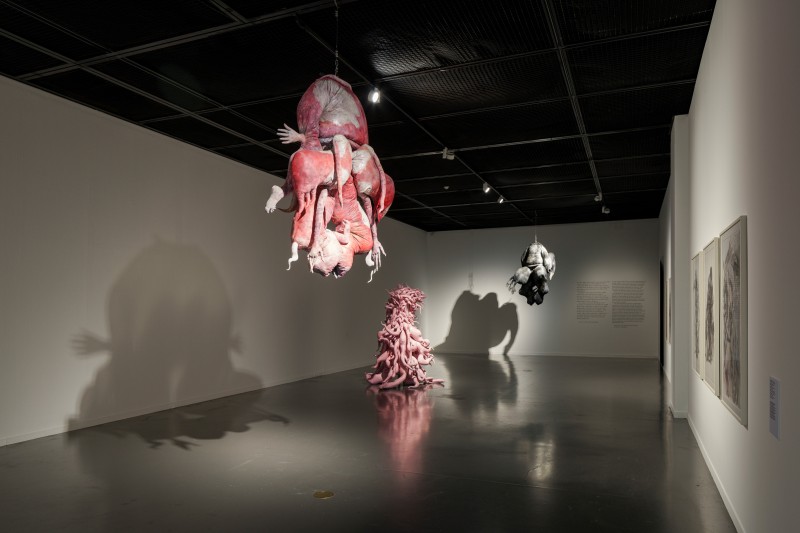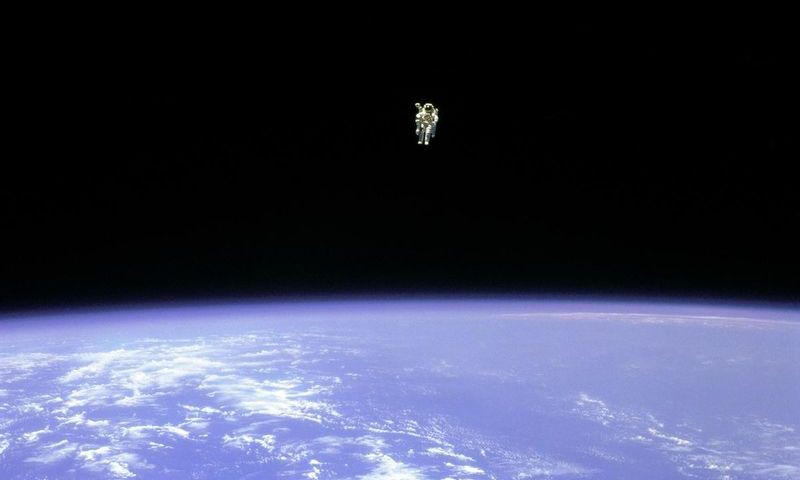Suddenly Everything Changes, so Sugar Becomes Bitter, Lead Becomes Lighter, and When Stones Are Laid, Nothing Prevents Them From Flying Away Instead of Falling▼1
Enter a vacant theatre. Step onto an empty stage. Theatre is one of the places that inspires, encouraging the imagination, a place for political reflection and solidarity, and often landmark achievements of town and city architecture. Perhaps the theatre offers the closest experience to the origins of space. As it has to be empty while also occupied it should be standardised and liberated at the same time.
It is quite natural to start our story about space with the theatre, even though I personally do not like theatres.
To be honest, I do not understand why people go to the theatre. I tend to dislike masters performances in famous theatres and the reason for this is as follows: first, I despise the ticketing war, as I am a straggler, a body abandoned in the field; second, I do not like pretentious people who fill the theatre lobby, although I admit I am one of them; third, I hate the masters and their works.
Cascade Passage, a performance by Mu:p hosted last October at the Asia Culture Centre (ACC) Theatre in Gwangju, was a show tailored to an audience of theatregoers like me. This was because there were no reservations, no audience members, and no maestro.
The reason that there were no reservations and no audience was simple: their performance was a showcase of those that had participated in the ACC Theatre’s residential programme. Furthermore, only a small number of people were invited because of COVID-19 and the necessary restrictions imposed by social distancing. The reason that there were no chief performers needs a little more explanation. Of course, it is not that the duo Mu:p, comprising choreographer Cho Hyeong-Jun and architect Son Minsun, cannot be known as masters as they are young artists. However, their work is not what we might think of as an assertive display of the so-called artist's creativity, inflated sense of self, or florid technique.
Mu:p is a performance group that explores the relationship between space and motion. They could be said to symbolise a certain kind of site-specific work, but I do not want to describe them in that way. This is because I am at a certain distance from the hype generated by the term site-specific art and what that introduces to a place or to an attitude that almost sanctifies a given place. Mu:p puts on performances that are closely related to space by conceiving the location in the round, but that is not everything. The place where we view and experience their work is always associated with particular social contexts, bureaucratic and administrative procedures, or (sometimes) commercial needs, because those factors constrain our lives and work on a broad scale. Therefore, their spaces are always straddling both aspects in terms the specific and the universal, and as such there is no ‘complete’ site-specific art – its conceptual grounding is based in rhetoric requiring reconsideration (the same goes for medium specificity or the nature of materials).
There is another thing Mu:p doesn't do; they do not display the physical techniques or movements anticipated from a dance-based performance group. People assume certain things of modern dance performances: the elegant body of a dancer flying through the air against the backdrop of a ruined power plant; the harmony of firm and delicate human musculature and the cool properties of modern architecture. Such paradoxes cannot be observed in their performances...The characters move very slowly or walk or run like ordinary people. Audiences who come to see post-human dance and classic technique suffer heartache, saying, ‘contemporary art is difficult…’
Anyway, let's stop talking about Mu:p. The main character in the Cascade Passage is not them but the ACC Theatre. The content of the performance is simple; those who enter the empty theatre are guided by A.I. A.I. says that this is a power plant that has been shut down since the first-ever blackout and operates only using surplus power. Audiences are defined as those who come to see the scene of a technological disaster. Cast under a narrative inspired by dark tourism in regions such as Auschwitz, Chernobyl, and Fukushima, audiences slowly observe the empty theatre. The theatre's facilities create a gloomy and heavy sonic climate and operated slowly, while A.I., like a tour guide, explains the course of action and causes of the disaster in an innocently bright tone of voice.
Dark tourism is a concept that has been studied in earnest since the 1990s and as a new form of tourism can act as a kind of commemorative project to locate the historical places struck by tragedy. These attempts to combine the experience of such pain, as a grave and serious reflective endeavour, and tourism, a light and leisurely activity, can feel somewhat disrespectful. However, the Japanese philosopher Hiroki Azuma argues that tourism can be the most straightforward practice through which we might combat future violence.
Can Cascade Passage be known as a work of artistic dark tourism, recalling a historical tragedy in that sense? However, in fact, dark tourism is more of an interesting ‘McGuffin’, and the disaster dictated by the performance is of an entirely different kind. The performance suggests a disaster that is much closer to those in everyday space.
The Asia Culture Centre Theatre is the world's largest, most versatile theatre. This facility was finalised following intensive discussion from the planning stage. In the final report of ‘ACC Theatre Operation Plan Design’ prepared in 2007, the theatre was described as follows:
‘It is a total solution space in which creation and enjoyment, distribution and education can organically circulate while realising the value of production and planning-oriented theatre along with the goal of free stylistic experimentation and acceptance. In particular, the Grand Theater is a variable performance space pursuing the free transformation of the stage and auditorium, transcending the physical stage environment of a general concert hall.’
It is questionable how one might define the total solution space and how it might ‘transcend’ the physical stage environment. Moreover, the theatre was built in a unique and grandiose style that suits this intention, and the 15m ‘Big Door’ boasted by the theatre is a wall and door combined that breaks down the inner and outer boundaries, reminiscent of aviation hangar.
However, what is most interesting about the ACC Theatre is the theatre's technical conditions, which after opening far exceeded their ambitions. In simple terms, theatres are typically state-of-the-art, but so few people and environments can use those features.
In a 2015 article on the ACC Theatre, an anonymous theatre critic claimed that ‘It is difficult to know what kind of changes can be been made to the middle, as none of the people who were first involved in the establishment of the ACC remain’.▼2 Unsurprisingly, the long-awaited Big Door didn't work properly due to technical issues during Mu:p’s residency. This situation, like something from an absurd drama, is what actually happens in most architectural spaces we encounter in society. It is inevitable that long and complicated administrative and bureaucratic procedures direct a large-scale theatre, a space in which various facilities, networks, and manpower are closely intertwined.
Mu:p’s Cascade Passage is a performance that presents a new ontology to a new space. After the disaster, the power plant-theatre is operated in strange ways by the nature of the space itself. It's a kind of self-producing system, and there's no way to know what's going on here, what's going to happen, and when everything will stop.
The French philosopher Quentin Mayjasu’s Metaphysics and Out-of-Science Fiction is a book that argues for the possibility of FHS (Fiction Hors-Science / Extro-Science Fiction) as opposed to general science fiction. FHS is a genre that depicts a future world in which science becomes impossible, and Quentin Mayyasu takes René Barjavel's novel Ashes, Ashes (French: Ravage) as a representative case. Ashes, Ashes deals with a dystopian future after a blackout. It is impossible to explain in reasonable terms the reason for the blackout. To put it simply, what Meillassoux claims in this book, the only inevitable statement about the world, is the fact that the world is coincidental. Thus, we cannot locate any rational or inexorable explanations of the world.
But I should not go too far in a short essay. What is essential is the fact that practice, such as the performances of Mu:p, is an effective strategy to visualise and activate the accidental character of space. As such, space must be defined but remain in an unspecified state.
---
1 Quentin Meillassoux, Metaphysics and Extro-Science Fiction, trans. by Eom Taeyeon, Seoul: Ehaksa, 2017.
2 Jang Jiyoung, ‘Gwangju Asia Culture Centre Theatre confirming the “gap between ideal and reality”’, The Kukmin Ilbo, 31 Aug. 2015.
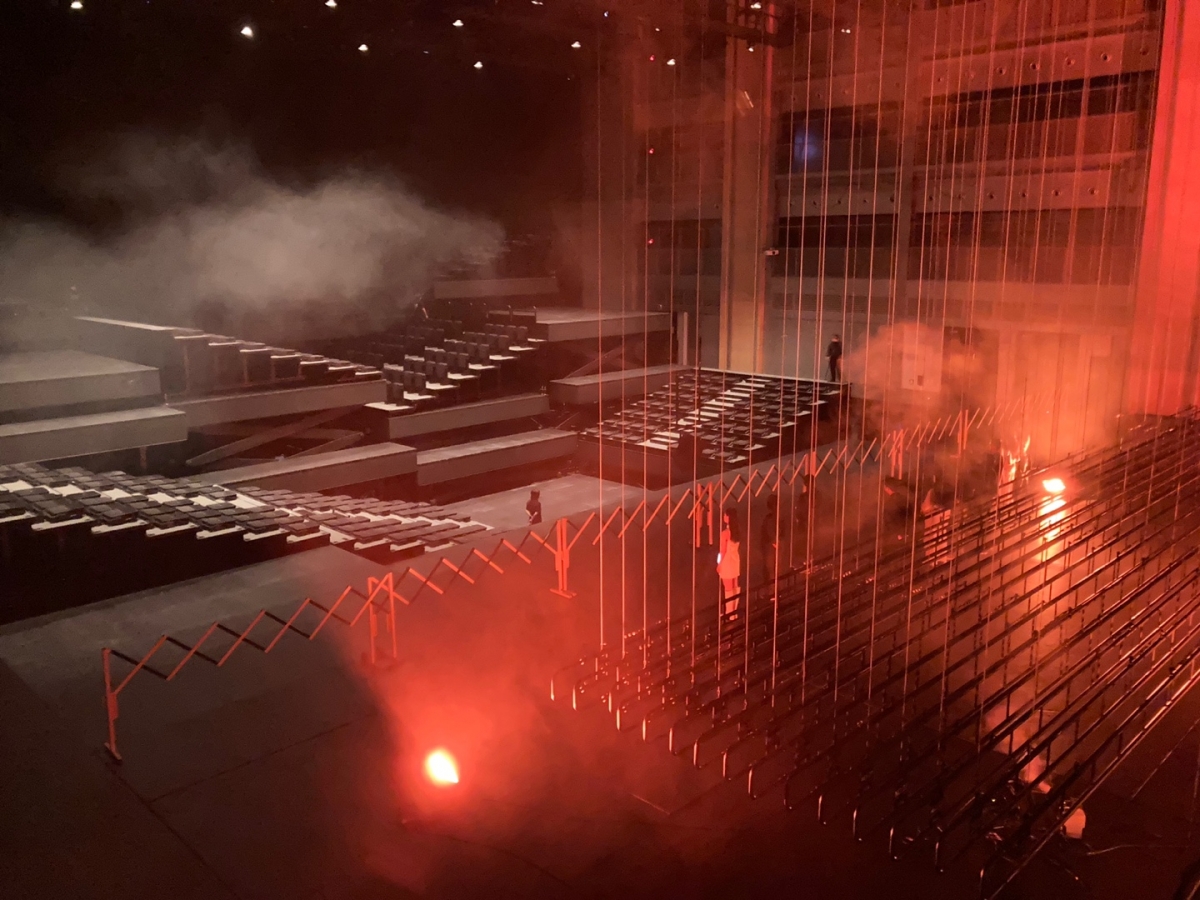
View of performance 'Cascade Passage' / ⓒ[Mu:p]
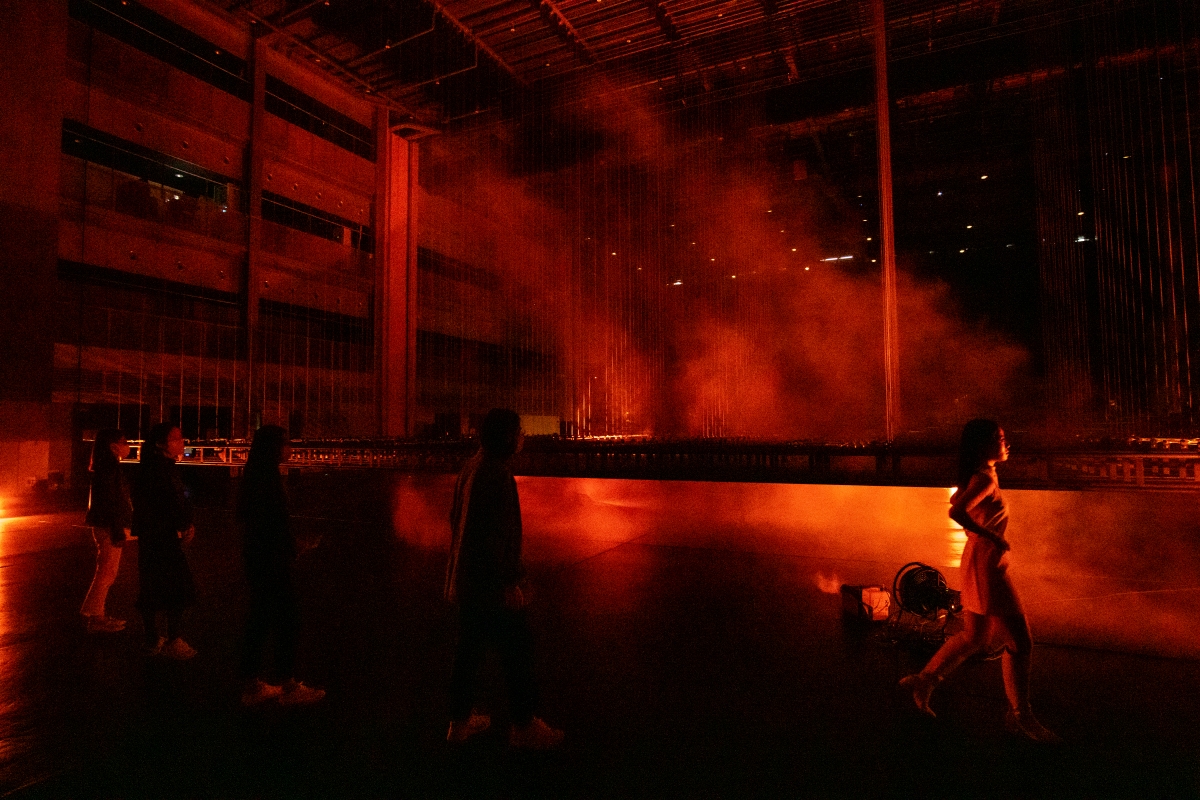
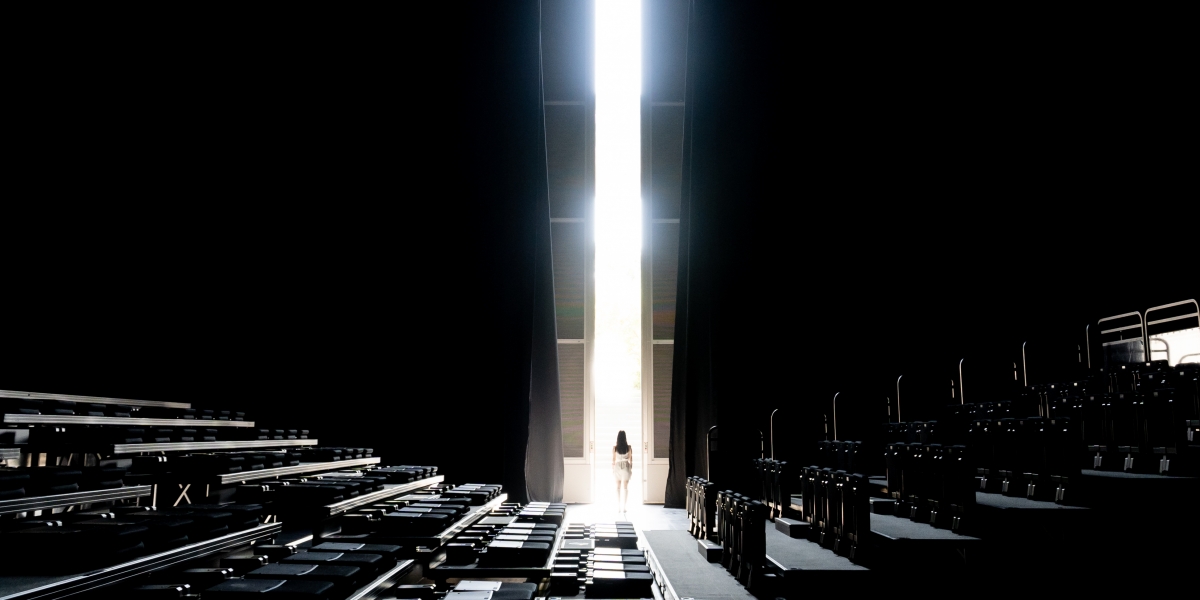
View of performance 'Cascade Passage' / ⓒAsia Culture Center
Jung Jidon
Jung Jidon studied Film and Creative Writing. He published a collection of short stories, novels, critics, and essays such as Like I Fight, We shall survive in the memory of others.
6






